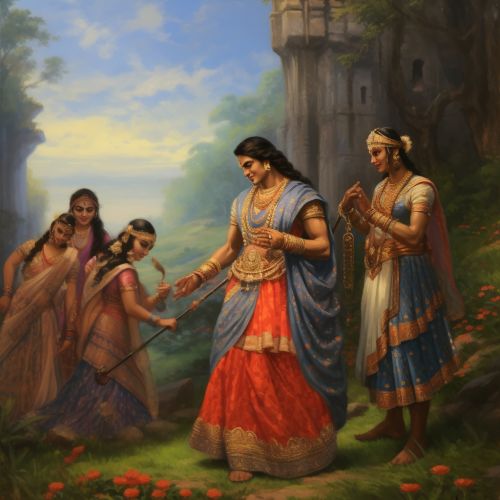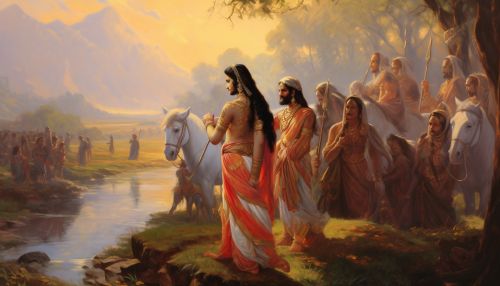Mahabharata
Origins
The Mahabharata is one of the two major Sanskrit epics of ancient India, the other being the Ramayana. The title can be translated as "the great tale of the Bharata Dynasty," referring to the lineage of the epic's heroes. The Mahabharata is attributed to the sage Vyasa, who is also a major character in the epic. It is traditionally believed to have been written between 400 BCE and 400 CE, although most historians now place its composition between 300 BCE and 300 CE.
Structure and Content
The Mahabharata is the longest epic poem in the world, with over 100,000 individual verse lines, and long prose passages, making it roughly four times the length of the Iliad and the Odyssey combined. It is divided into 18 books, or parvas, each of which deals with a different aspect of the overarching narrative.
The central story of the Mahabharata revolves around a dynastic struggle for the throne of Hastinapura, a kingdom ruled by the Kuru clan. The two branches of the family that participate in the struggle are the Kauravas, the elder branch of the family, and the Pandavas, the younger branch. The epic explores themes of duty (dharma), righteousness, and the moral and social obligations of individuals in society.
Characters
The Mahabharata features a vast array of characters, each with their own complex personalities, motivations, and arcs. The most important characters include the five Pandava brothers - Yudhishthira, Bhima, Arjuna, Nakula, and Sahadeva - and their common wife, Draupadi. Other significant characters include the Kaurava brothers, led by Duryodhana and Dushasana, and their advisor and uncle, Shakuni. The god Krishna, who serves as Arjuna's charioteer and spiritual guide, is also a central figure in the epic.
Themes
The Mahabharata explores a wide range of philosophical and ethical issues. It emphasizes the importance of dharma, or duty, and the consequences of adharma, or unrighteousness. The epic also explores the nature of reality and illusion (maya), the self and the universe (atman and brahman), and the paths to spiritual liberation (moksha).
Influence
The Mahabharata has had a profound influence on Indian culture, religion, and philosophy. It has been retold and reinterpreted in numerous regional languages and artistic forms, including drama, dance, and film. The Bhagavad Gita, a 700-verse section of the Mahabharata, is one of the most important texts of Hindu philosophy.


